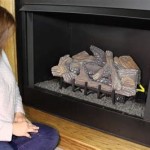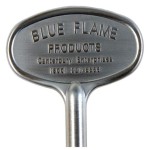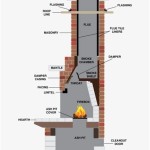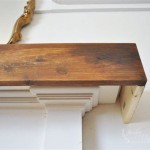Fireplace Hearth Options: Functionality and Aesthetics
The fireplace hearth serves as a critical component of a fireplace system, extending outward from the firebox and providing crucial protection and aesthetic enhancement. Its fundamental role is to shield the surrounding floor from sparks, embers, and radiant heat that could potentially cause damage or ignite nearby materials. Furthermore, the hearth contributes significantly to the overall visual appeal of the fireplace, integrating it seamlessly into the room's design. Selecting the appropriate hearth material involves careful consideration of factors such as fire resistance, durability, maintenance requirements, and aesthetic compatibility with the existing décor.
The size and dimensions of the hearth are typically dictated by local building codes and safety regulations. These codes are designed to ensure adequate protection against fire hazards, specifying minimum distances that the hearth must extend in front of and to the sides of the firebox opening. Adherence to these regulations is paramount for ensuring the safe operation of the fireplace and preventing potential fire-related incidents. Beyond the regulatory aspects, hearth size also influences the visual balance of the fireplace within the room. A hearth that is too small may appear insignificant, while one that is excessively large could overwhelm the space.
The choice of hearth material profoundly affects both the functionality and the aesthetic of the fireplace. A variety of materials are available, each possessing unique properties and characteristics. Common options include natural stone, such as granite, marble, and slate; manufactured stone, offering a more cost-effective alternative; brick, providing a classic and traditional look; tile, offering versatility in color and design; concrete, conveying a modern and industrial aesthetic; and metal, particularly steel or cast iron, known for its heat resistance and durability. The selection process should involve a thorough evaluation of the pros and cons of each material, taking into account factors such as heat resistance, ease of cleaning, resistance to staining, and long-term durability.
Key Considerations for Hearth Material Selection
The selection of the optimal hearth material necessitates a comprehensive evaluation of several key factors. These factors encompass fire resistance, durability, maintenance, aesthetics, and cost. Each of these aspects plays a significant role in determining the suitability of a particular material for a specific fireplace installation.
Fire Resistance: A primary function of the hearth is to provide a non-combustible barrier to protect the surrounding floor from heat and sparks. Therefore, fire resistance is a non-negotiable requirement for any hearth material. Materials such as natural stone, brick, and concrete are inherently fire-resistant and can withstand high temperatures without sustaining damage. Other materials, such as wood, are completely unsuitable due to their combustibility and should never be used for hearth construction. When considering manufactured stone or tile, it is crucial to verify that the material is specifically rated for fireplace use and complies with relevant fire safety standards.
Durability: The hearth is subjected to constant wear and tear, including exposure to heat, ashes, and physical impacts. Consequently, durability is paramount. Materials like granite, slate, and concrete are known for their exceptional durability and can withstand years of use without significant degradation. Softer stones, such as marble, are more susceptible to scratching and staining and may require more careful maintenance. Brick is a durable and long-lasting option, but it can be porous and may require sealing to prevent water damage. Tile durability varies depending on the material and construction of the tile, with porcelain tile generally being more durable than ceramic tile. The selection of a durable material ensures that the hearth will remain in good condition for many years, minimizing the need for costly repairs or replacements.
Maintenance: The ease of maintenance is another important consideration. The hearth will inevitably accumulate ash, soot, and other debris over time. Materials that are easy to clean and resistant to staining will simplify the maintenance process and keep the hearth looking its best. Smooth, non-porous surfaces, such as polished granite or sealed concrete, are generally easier to clean than textured or porous surfaces, such as brick or unfinished stone. Certain materials may require periodic sealing to protect them from moisture and staining. The availability of readily available cleaning products specifically designed for the chosen hearth material is also a factor to consider. A low-maintenance hearth will save time and effort, allowing for more enjoyment of the fireplace itself.
Popular Hearth Materials: Properties and Characteristics
The selection of a hearth material often involves a trade-off between aesthetic appeal, durability, and cost. A comprehensive understanding of the properties and characteristics of each material facilitates a more informed decision-making process.
Natural Stone: Natural stone encompasses a wide range of options, including granite, marble, slate, and limestone. Each type of stone possesses unique characteristics in terms of color, texture, and veining. Granite is renowned for its exceptional durability, heat resistance, and resistance to staining. Marble is prized for its elegant appearance but is more susceptible to scratching and staining than granite. Slate offers a rustic and textured look and is highly resistant to heat and moisture. Limestone provides a softer and more porous surface and may require more frequent sealing. Natural stone hearths are typically more expensive than other options but offer a timeless and sophisticated aesthetic. The natural variations in color and pattern ensure that each natural stone hearth is unique. The installation of natural stone requires specialized skills and equipment, typically involving professional installers.
Manufactured Stone: Manufactured stone, also known as cultured stone, is a composite material designed to mimic the appearance of natural stone. It is typically made from a mixture of cement, aggregates, and pigments. Manufactured stone offers a more cost-effective alternative to natural stone while still providing a similar aesthetic. It is generally lighter in weight than natural stone, which can simplify installation. However, manufactured stone is typically less durable than natural stone and may be more susceptible to fading or staining over time. The fire resistance of manufactured stone should be carefully verified before use in a fireplace hearth. Some manufactured stone products are specifically designed for fireplace applications and meet relevant fire safety standards. The selection of a reputable manufacturer and a high-quality product is essential for ensuring the long-term performance of a manufactured stone hearth.
Brick: Brick is a classic and traditional hearth material that offers a warm and inviting aesthetic. It is a durable and fire-resistant material that can withstand high temperatures. Brick hearths can be constructed in a variety of patterns and styles, adding visual interest to the fireplace. Brick is a relatively porous material and may require sealing to prevent water damage and staining. The color and texture of brick can vary depending on the type of clay used and the firing process. Reclaimed brick offers a unique and rustic look, but it may be more porous and require more extensive cleaning. Brick hearths are typically more affordable than natural stone hearths but may require more maintenance due to their porous nature. The installation of a brick hearth involves laying individual bricks in a mortar bed, requiring skilled craftsmanship.
Tile: Tile offers a versatile and customizable hearth option, with a wide range of colors, patterns, and sizes available. Ceramic tile and porcelain tile are the most common types of tile used for hearth applications. Porcelain tile is generally more durable and water-resistant than ceramic tile, making it a better choice for high-traffic areas or areas prone to moisture. Tile hearths can be designed to complement any décor style, from traditional to modern. The grout lines between tiles can be susceptible to staining and may require regular cleaning and sealing. The fire resistance of tile should be carefully verified before use in a fireplace hearth. Some tiles are specifically designed for fireplace applications and meet relevant fire safety standards. The installation of a tile hearth involves adhering individual tiles to a substrate, typically using mortar or thin-set adhesive. Precise alignment and spacing are essential for achieving a professional-looking result.
Concrete: Concrete is a modern and industrial hearth material that offers a sleek and minimalist aesthetic. It is a durable and fire-resistant material that can be stained or polished to achieve a variety of finishes. Concrete hearths can be cast in place or pre-cast, offering flexibility in design and installation. Polished concrete offers a smooth and non-porous surface that is easy to clean. Stained concrete can add color and visual interest to the hearth. Concrete is a relatively heavy material and may require additional structural support. Concrete hearths can be susceptible to cracking if not properly reinforced or cured. Sealing is recommended to protect the concrete from moisture and staining. The cost of a concrete hearth can vary depending on the complexity of the design and the finishing techniques used.
Metal: Metal, particularly steel or cast iron, is a durable and heat-resistant hearth material that conveys an industrial or contemporary aesthetic. Metal hearths can be fabricated in a variety of shapes and sizes, offering design flexibility. Steel hearths can be powder-coated or painted to provide a protective finish and prevent rust. Cast iron hearths offer excellent heat retention and can radiate heat into the room even after the fire has been extinguished. Metal hearths can be susceptible to scratching and denting, requiring careful handling. The cost of a metal hearth can vary depending on the type of metal used, the complexity of the design, and the finishing techniques employed. Metal hearths can be a distinctive design element, contributing to a modern and sophisticated fireplace aesthetic. The installation of a metal hearth may require specialized welding or fabrication skills.
Hearth Design Considerations and Integration
Beyond the material selection, the design and integration of the hearth into the overall fireplace and room aesthetic are essential considerations. The shape, size, and placement of the hearth can significantly impact the visual appeal and functionality of the fireplace.
Shape and Size: The shape of the hearth can be rectangular, square, curved, or custom-designed to complement the fireplace and the surrounding room. Rectangular hearths are the most common and offer a clean and simple look. Square hearths can add a contemporary touch. Curved hearths can soften the lines of the fireplace and create a more inviting atmosphere. The size of the hearth should be proportional to the size of the fireplace and the room. A hearth that is too small may look insignificant, while a hearth that is too large may overwhelm the space. The hearth should also comply with local building codes and safety regulations regarding minimum clearances from the firebox opening. The shape and size of the hearth can be used to create visual interest and enhance the overall aesthetic of the fireplace.
Placement and Extension: The placement of the hearth in relation to the fireplace and the surrounding floor is crucial for both safety and aesthetics. The hearth should extend far enough in front of the firebox to protect the floor from sparks and embers. The extension of the hearth to the sides of the firebox should also be sufficient to prevent accidental contact with hot surfaces. The height of the hearth can also be varied to create different visual effects. A raised hearth can create a more dramatic focal point, while a flush hearth can blend seamlessly with the surrounding floor. The placement of the hearth should be carefully planned to ensure that it meets both functional and aesthetic requirements. The integration of the hearth with the surrounding floor can be achieved through the use of coordinating materials or contrasting colors.
Integration with Fireplace Surround: The hearth should be integrated seamlessly with the fireplace surround to create a cohesive and harmonious design. The materials and colors of the hearth and the surround should complement each other. The style of the hearth should also be consistent with the style of the surround. For example, a rustic stone surround would pair well with a natural stone or brick hearth, while a modern tile surround would complement a concrete or metal hearth. The hearth and surround can be designed as a single unit or as separate components that are carefully coordinated. The use of decorative elements, such as moldings or tiles, can further enhance the integration of the hearth and the surround. A well-integrated hearth and surround will create a visually appealing and functional focal point in the room.

Guide To The Right Fireplace Hearth Direct Fireplaces

Tile Inspiration For Fireplaces And Hearths The Otto House

Natural Stone Hearths Customizable Grey Sandstone Primethorpe Paving

Guide To The Right Fireplace Hearth Direct Fireplaces
Fireplaces Glowing Hearth Home

How To Fit A Fireplace Tiles Hearth Victorian

How To Tile Over A Brick Hearth Shine Your Light

Fireplace Tiles Fire Surround Hearth

Fireplace Mantels Stone Facing Chadds Ford Fireside

What Are The Best Tiles For A Fireplace Rotherham Centre








